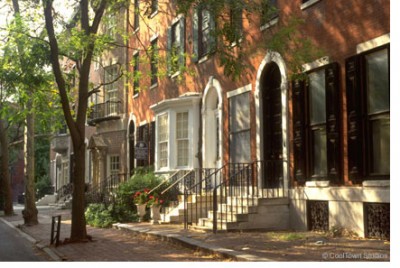The little known catch 22 of gentrification

Gentrification: The restoration and upgrading of deteriorated urban property by middle-class or affluent people, often resulting in displacement of lower-income people.
With a dictionary definition like that, what good is there in a bunch of rich people pricing a bunch of poor people out of their neighborhood? In a place like Harlem where only 10% of all residences are owner-occupied (average in New York City is 30%, nationally it’s 67%), not much at all.
However, in neighborhoods where homeownership is on the average with the surrounding area, it’s not so bad at all, according to this recent USA Today article, Studies: Gentrification a boost for everyone. One national study concluded that a poor resident’s chances of being forced to move out of a gentrifying neighborhood are only 0.5% greater than in a non-gentrifying one, and two others showed that living in a gentrifying neighborhood actually made it less likely a poor resident would move.
The reason? Attrition. In an undesirable neighborhood, people look to move away anyway. Once it becomes desirable, they no longer want to move, but can’t afford to stay. That’s the catch 22, you’re encouraged to move either way. However, at least you’re given multiple opportunities to stay in the desirable neighborhood, along with higher-paying jobs. The ideal situation is to own, which is why homeownership organizations like this are so vital. If not, the article also lists other survival tactics like sharing rooms, or living in cozier units.
Have you experienced gentrification? Speak your mind below…

Gentrification….Gentrification, oh how i love Gentrification. The only problems with gentrification is that you leave out that those residents usually don’t have the job skills to get high paying jobs to either move out or own the property and afford the rising tax on property. You and I live in DC and we both see this with Shaw, U Street, and other DC neighborhoods. I’m all for it, but at times its sad when you talk to a 65 yr old grandmother whose on social security and renting or owns a home trying to make ends meet.